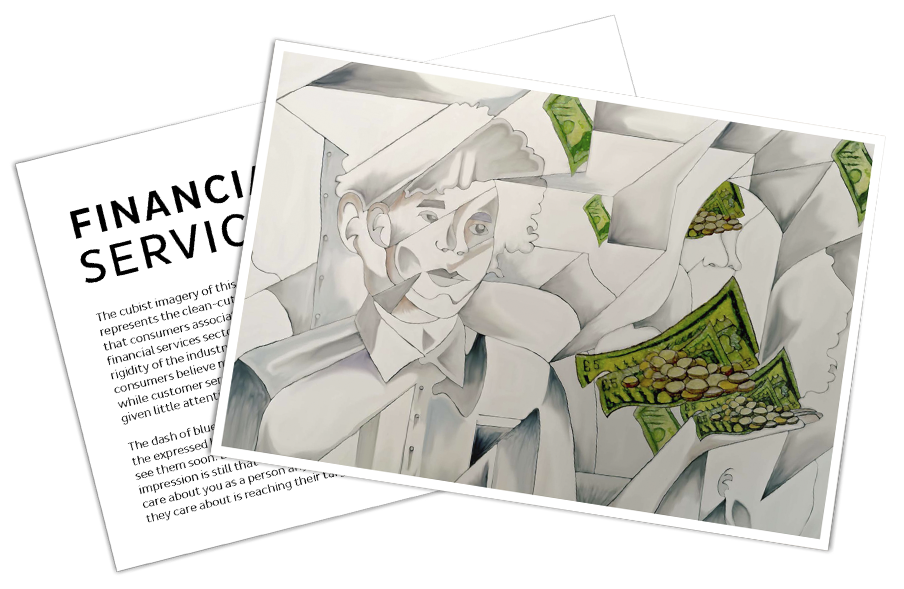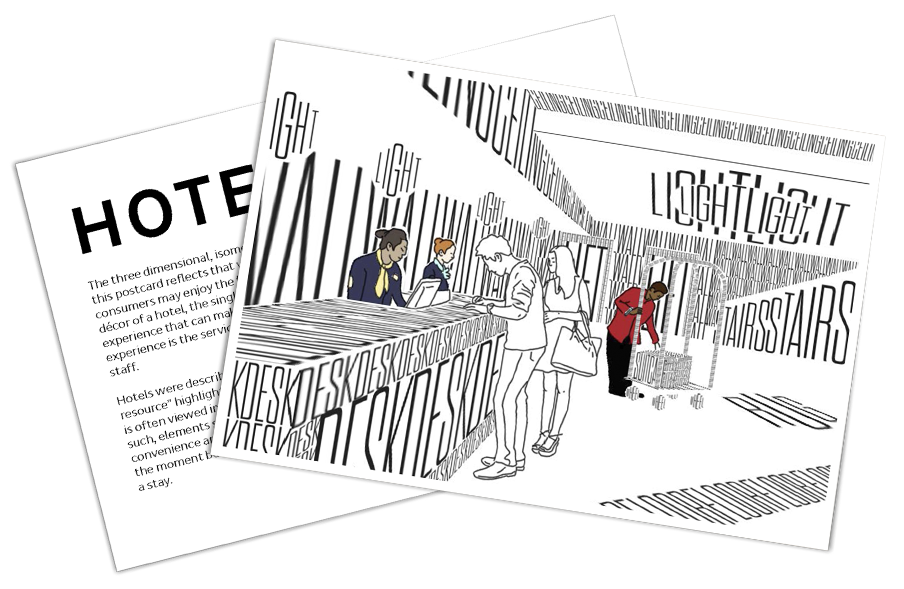Over the past decade, storytelling – or the ability to connect audiences to data – has become an integral part of the researcher’s toolkit. It’s easy to theorise that as the volume of data has grown, decision makers need experienced navigators to humanise numbers, make sense of themes and leave a lasting impact.
A simple question, that most researchers will be used to asking, is: why? What is the purpose of telling stories with data? Several answers exist, ranging from: engaging stakeholders, accelerating the reporting process and cutting through an overwhelming amount of data. All these answers point to a single objective – activating insight and ensuring decisions are based on real-world data.
This begs another question. Is storytelling the best way to activate insight? Or, is there a better way to make insight memorable, relevant and impactful?
Perhaps, there is.
So instead of storytelling, how about art?
Let’s begin by examining the effects that art has on the brain and the psychological evidence.
Embodied Cognition
When we view a piece of art, the subject that’s depicted isn’t really what it is. A painting of a person isn’t really a person. However, our brains can immediately piece together lighting, brush strokes, texture and form to understand and interpret it as a person. Our minds even seek shapes, patterns and meaning within the abstract. It’s the reason we might recognise the familiar shape of a cloud, or see a portrait on a slice of toast.
This all happens because of how adept our brains are at making sense of incomplete information. In fact, the process of creating meaning from art stimulates the mind in a way that requires more cognitive effort then when we view complete information. It’s this effort that makes art memorable and leaves a lasting impression.
However, there’s a second, deeper effect that art also has on a viewer. Embodied cognition is the process that takes place when mirror neurons translate the action, movement and energy conveyed into emotion. At a fundamental level, this is what we would describe as placing ourselves within the world of the artwork. Viewers of a Jason Pollock drip painting will often describe how they can feel the action of flicking the paint onto the canvas. Viewers of a choppy seascape may similarly experience the rocking motion of the waves, the smell of the air or the sensation of wind.
It’s theorised that the process of embodied cognition, combined with the mental effort required to complete and interpret visual imagery is what could make art a more effective medium for activating insight than storytelling.
The Goal of Art in Market Research
However, art has limitations too. One of art’s main drawbacks compared to storytelling is that less information can be communicated. An engaging story can last seconds, minutes or even hours. Art, meanwhile, is confined to the medium and how long an individual will invest in it. Similarly, it’s fair to say that art can’t communicate as many data points as a well-constructed story, or do so as clearly.
Given these drawbacks, you may be questioning why anybody would use art to communicate insight. Ultimately, the answer comes down to what is trying to be achieved. While it’s tough to convey detail and specifics within artworks; they’re significantly better equipped to stimulate emotion.
Perhaps, therefore, we shouldn’t view art as a replacement to storytelling techniques – but rather a complementary medium. In this capacity, art doesn’t need to (nor should) communicate detail. Instead, art should aim to leave decision makers and stakeholders with a feeling that lasts long past when numbers and words have faded from their mind. It’s this feeling that should drive people back to the research (however it was presented) when critical decisions are being made.
If we work to these assumptions, the objective of art in research presentations should be singular; present key themes in a memorable way.
Creating Memorable Art
So, if creating memorable, impactful art is our goal – how can that be achieved? There’s much debate around this question and few concrete answers. Scientists at MIT’s Computer Science and Artificial Intelligence Laboratory devised a study of 10,000 images which found pieces with people in them were most memorable, followed by images of human-scale space and close-ups. While landscapes were deemed easiest to forget, memorability was boosted by the presence of the unexpected.
Others suggest that the most memorable art is that which stimulates the greatest number of neurological reactions – such as pleasing geometry, distinct use of colour or the breaking of tropes.
It’s a debate that is unlikely to be settled anytime soon. However, for researchers seeking to complement their reports and stories with memorable art, there’s four themes that should be considered:
- The shocking or unexpected often has the most lasting impact on viewers
- Art with a single subject or focus is widely considered most memorable
- Viewers should exert a small amount of cognitive effort to understand the message
- To achieve embodied cognition, representations of motion or energy are required
There’s clearly still a long way to go before art can be effectively and regularly used as part of the research activation process. However, experiments are being conducted in the area. For example, creating insight-led postcards based on consumer opinion to demonstrate how the medium can be used to activate insight and drive informed decision making.
My team at FlexMR have been working with brands and industry sectors to pilot how this can be achieved. Based on feedback expressed in qualitative bulletin boards, we’ve created an image of the high street inspired by both impressionist watercolour paintings and Lowry era industrialism to illustrate how consumers see both the death of the high street and success of experience-based retail stores playing out simultaneously.

Elsewhere, we’ve used elements of cubism to demonstrate the disconnect UK consumers feel between traditional financial services institutions and their own banking needs. Meanwhile we’ve reduced hotels to three-dimensional typographies, punctuated only by colourful, fully-realised staff; highlighting how they are perceived as the key differentiating factor.


But we’ve barely scratched the surface of this untapped method of stakeholder engagement. Over the next few years, it will be fascinating to see how research agencies and departments evolve the use of visual mediums to deliver high impact, memorable insight that resonates with decision making audiences.
Join ESOMAR & FlexMR for The Secret Art of Activating Consumer Insight webinar on November 12!


